Farine is short for Farinha de Manioca (cassava flour in Portuguese). Although this coarse grain like staple is different from the Brazilian farinha de maioca. It is a staple in Indigenous Guyanese communities, made from cassava and packed with history, nutrition, and purpose.
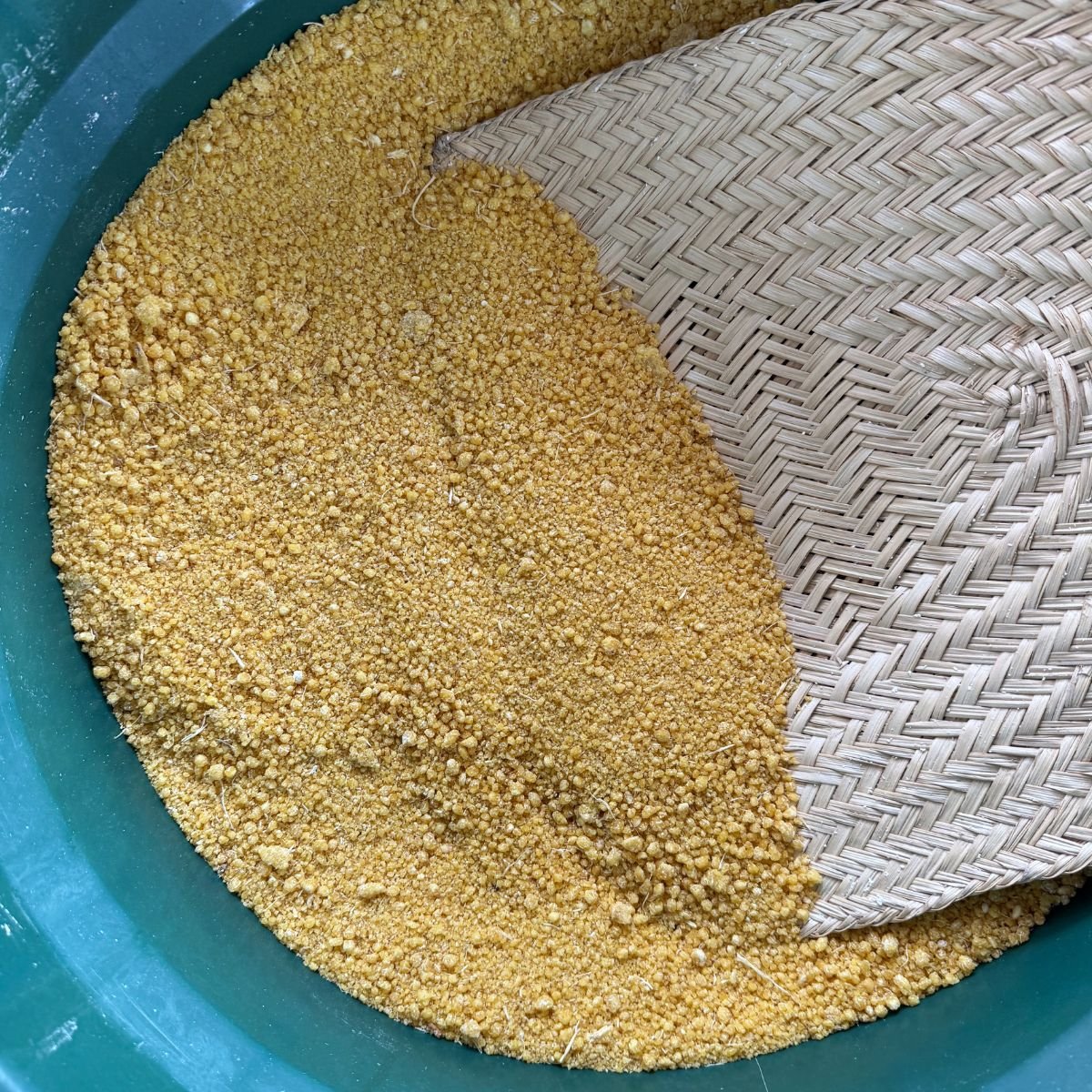
Farine hasn’t always been a part of my diet. A few years ago my sister in law was visiting us in Colorado. She grew up in Lethem, Guyana and brought with her a suitcase filled with farine. Like most people in the Rupununi it was an everyday staple in her diet.
The Rupununi is the southern most part of Guyana. With it’s close proximity to Brazil a lot of the meals offer a fusion between indigenous practices, Brazilian cuisine and the broader Guyanese culinary culture. Farine fits right in the intersection of the three.
What Is Cassava?
Cassava is a starchy root vegetable that grows underground and thrives in tropical climates. In Guyana, people use it to make everything from cassareep and cassava bread to parakari and farine. It comes in two varieties: bitter and sweet. Indigenous communities have learned to process the bitter (wild) cassava carefully to remove its natural toxins—a skill passed down through generations. While sweet cassava is readily available in open air markets in most townships and less toxic.
Bitter Cassava Versus Sweet Cassava
Bitter or wild cassava has a softer skin than the coarse dark skin of sweet cassava, making it easy to scrape off. When making farine, villagers mostly use the yellow cassava because it gives farine its yellow color. The freshly harvested wild cassava is so delicate, the skin comes off in a whisk and the grating seems effortless (although I know the entire process is labor intensive).
What Is Farine?
Farine is a dry, toasted cassava product that looks like coarse couscous or grits. It’s slightly nutty, crisp, and incredibly versatile. Farine is naturally gluten-free, high in resistant starch, and easy to digest. It’s also shelf-stable, making it a valuable food in areas without refrigeration.
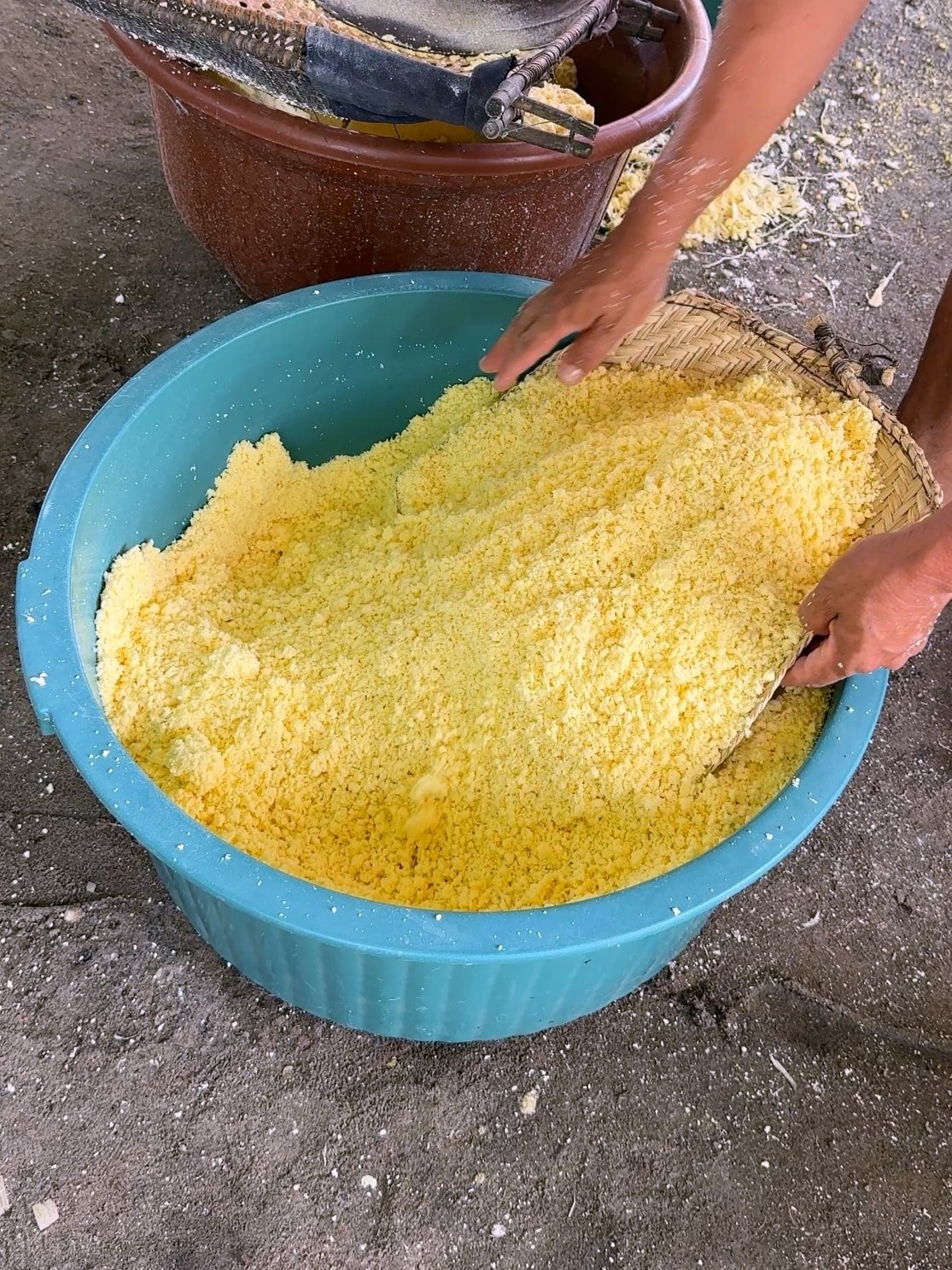
How to Make Farine
Making farine is a full-body experience. First, the villagers scraped, washed, and then grated the cassava. Some people still use the traditional grater made of a block of wood with metal sticking out. However, in some communities (like the one I visited) villagers use a motorized version that makes the process faster and more efficient.
Once they grate the cassava, they pack the pulp into a matapee—a long woven strainer made with fibers from the ite palm. The matapee hangs from a wooden beam and with another wooden beam inserted at the bottom it is wedged into a tree. Someone sits at the open end of the bottom beam and their weight pulls on the matapee causing the weaving to contract, squeezing the juice out of the grated cassava. Indigenous engineering at it’s finest.
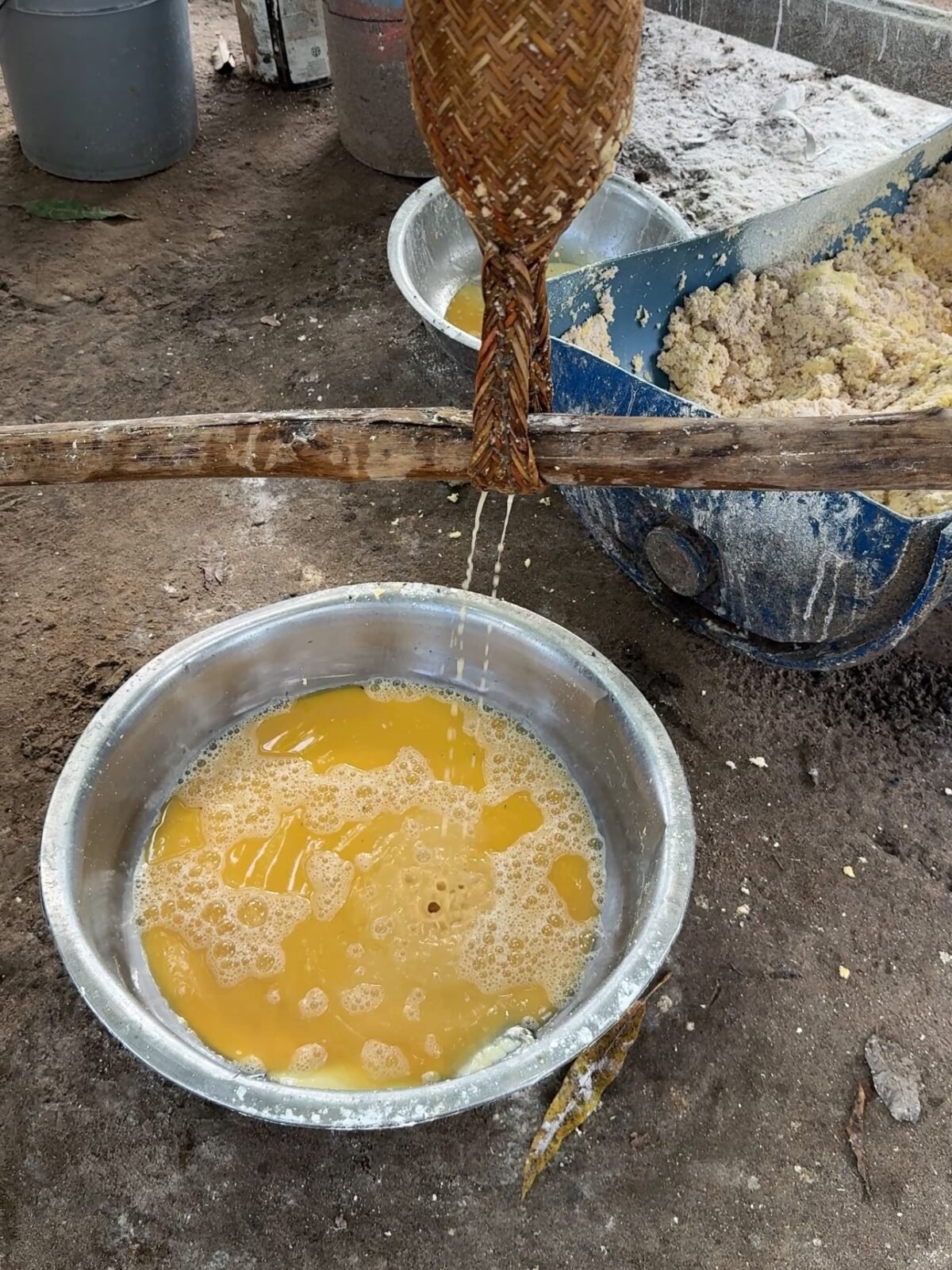
The remaining cassava husk is removed from the mattapee, then fed through a sieve also made with fibers from the ite palm. The holes in the sieve shapes the husk into tiny grains.


The cassava grains are then transferred to a flat surface. The surface is made of seasoned metal and is heated over a wood fire. The surface is first greased with some kind of fat. In the village I visited they used beef tallow. Then the cassava is added and toasted until dry.

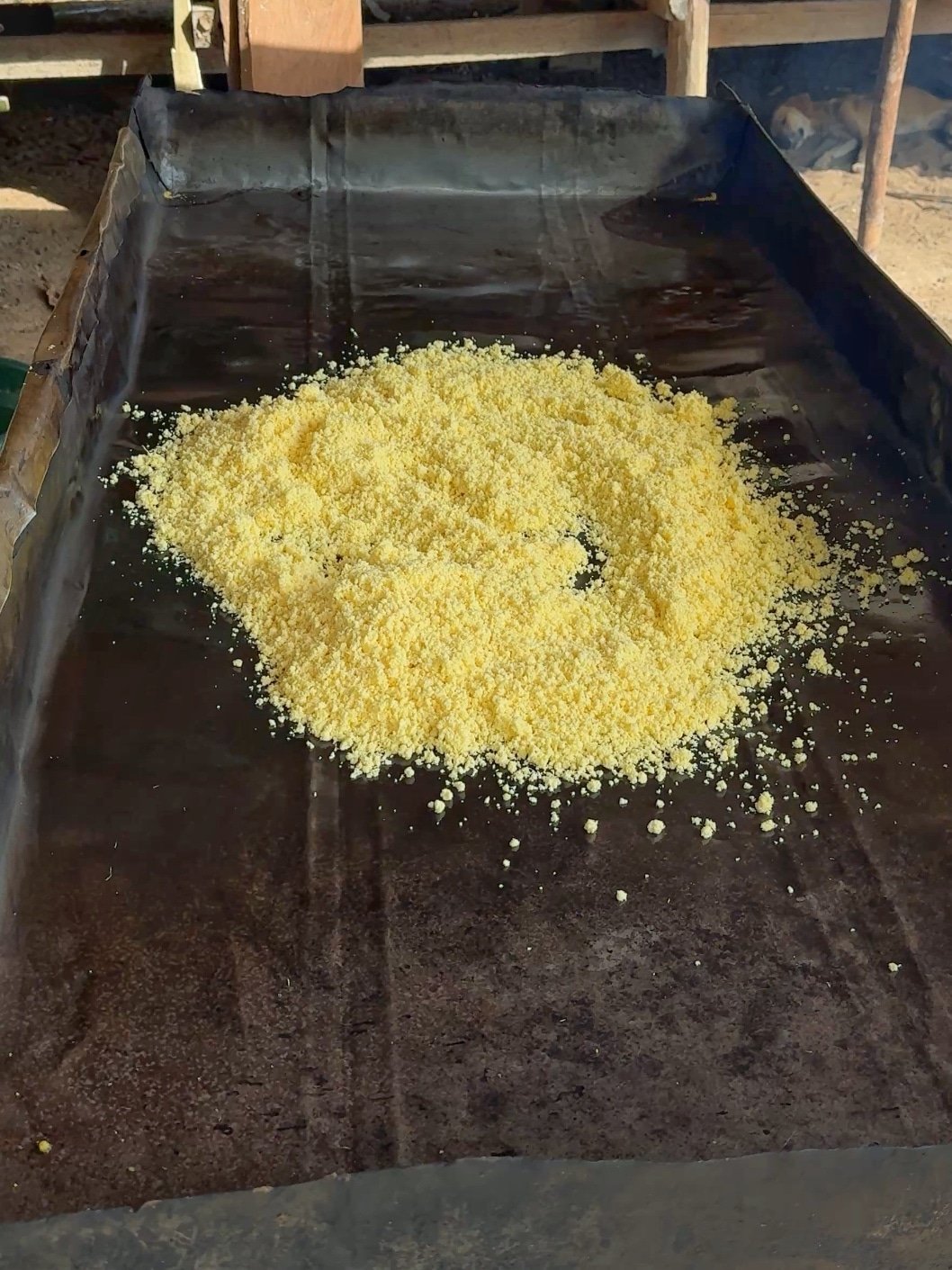
I watched as my host added cassava and more fat, then stirred the cassava with a wooden paddle to ensure even toasting.


I also got a chance to help with some of the stirring and man the farine for a bit.
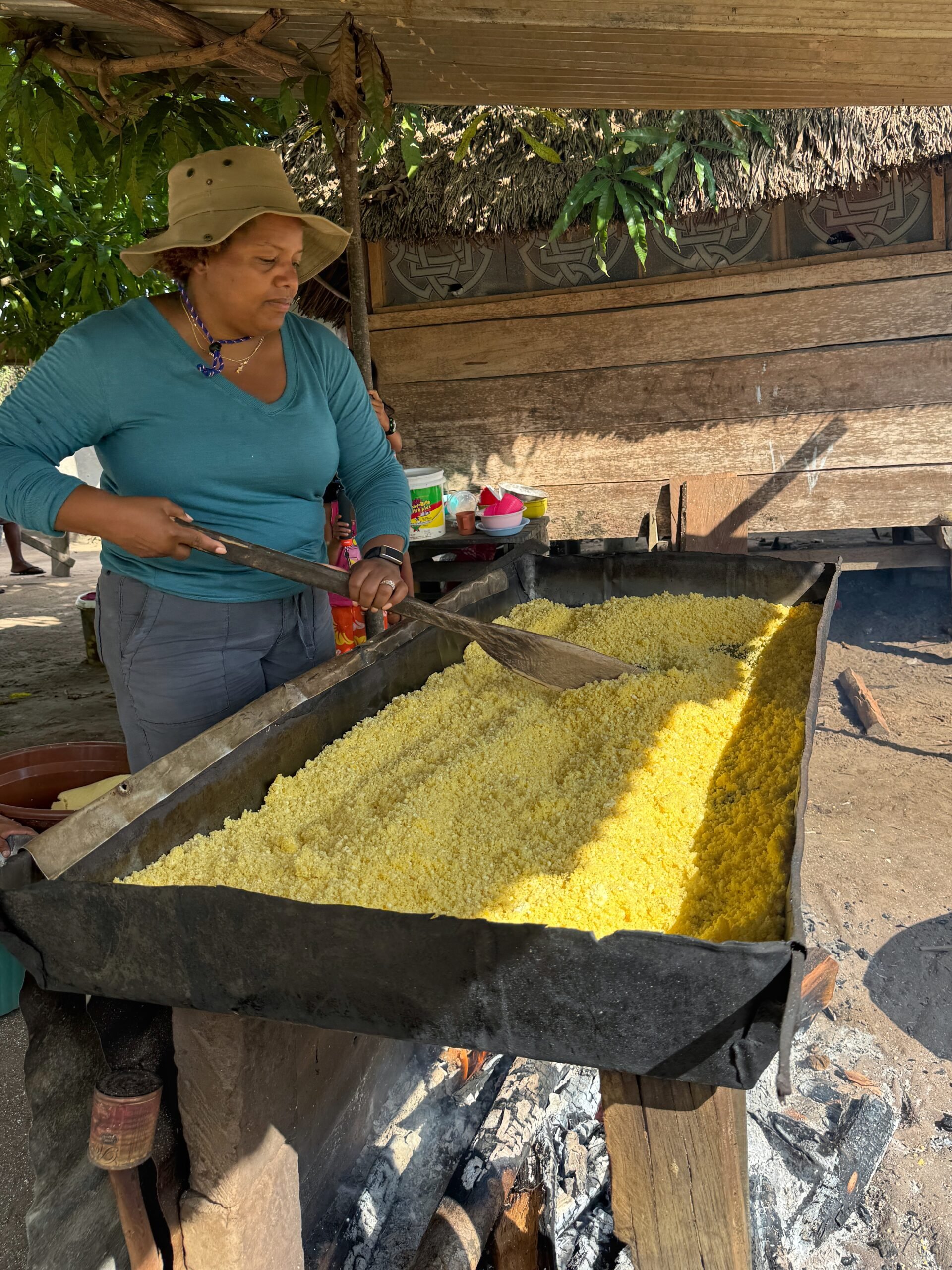
How to Use Farine
Farine is as flexible as rice or cornmeal. It can be sweet and savory, depending on what you’re making.
- Mix it with sugar and milk for breakfast. When mixed with milk, cold water, ice, peanuts and sugar farine is a quick meal or snack (specifically in the African diaspora)
- Serve it alongside pepperpot or tuma. It soaks up the broth and adds texture to the meal.
- Make a porridge. Combined with milk or coconut milk, it makes a warm and satisfying dish.
- Use it to thicken soups and stews. Just a few spoonfuls will give body to your favorite recipes.
- Make farine grits. Cook it down with liquid like you would corn grits for a savory, creamy side.
- Sprinkle it on top of dishes for crunch. It adds texture and a mild, nutty flavor to anything from roasted veggies to stews.
Frequently Asked Questions
Cassava is the starchy root vegetable that serves as the base ingredient. You make farine by grating, pressing, drying, and toasting the cassava until it becomes coarse, dry granules.
Bitter cassava contains natural toxins that must be removed before it’s safe to eat. Pressing the grated cassava in a matapee helps extract the juice, which carries those toxins out.
Yes, farine is fully cooked during the toasting process, so it’s safe to eat on its own. Many people enjoy it as a snack or mix it into drinks, porridge, or soups.


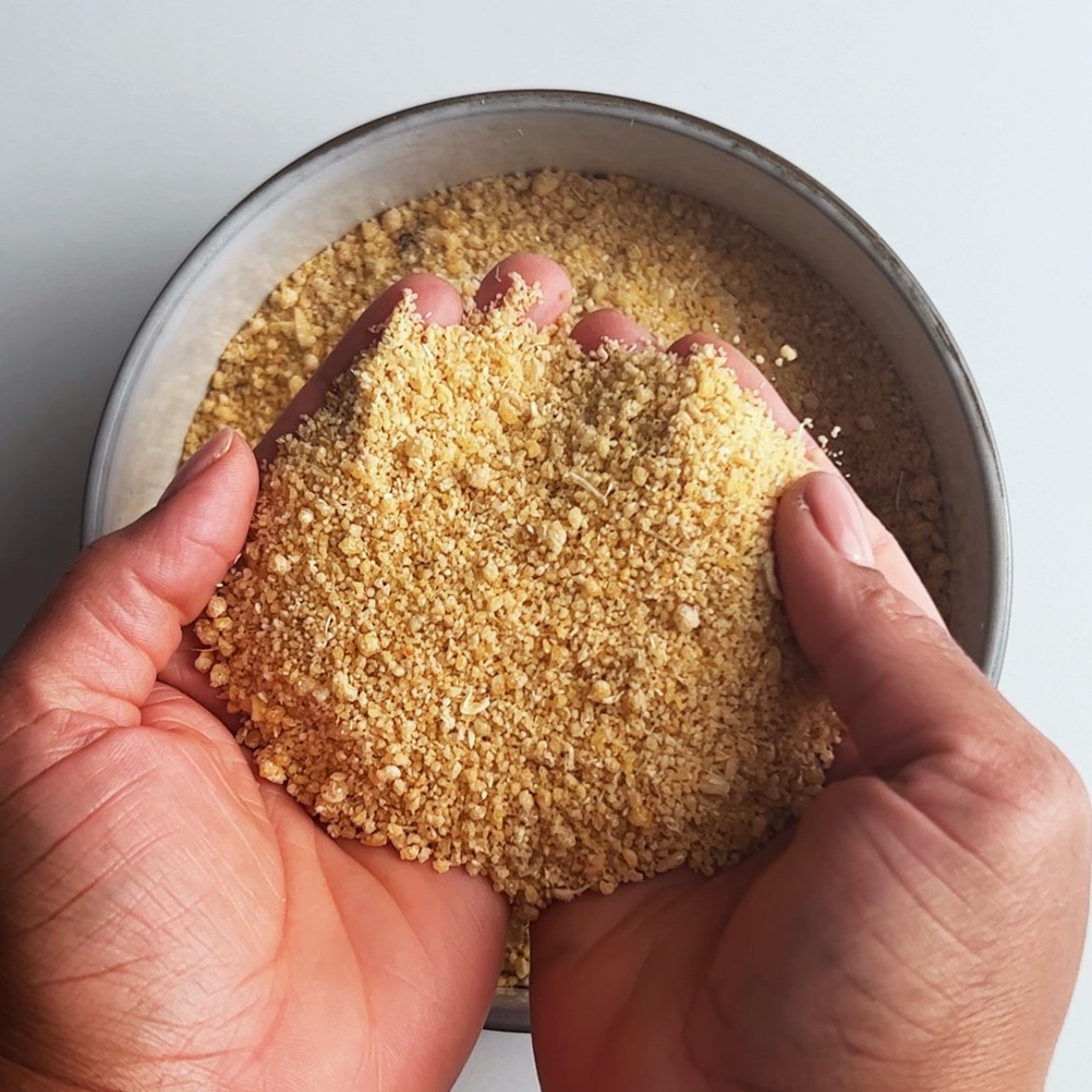
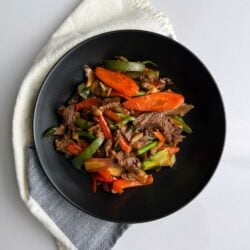 Steak and Veggies Stir Fry (Whole30)
Steak and Veggies Stir Fry (Whole30) Gluten Free Pinwheels
Gluten Free Pinwheels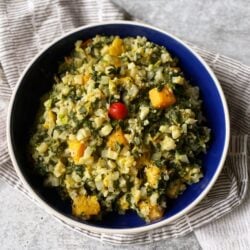 Callaloo Cauliflower Cook-Up Rice
Callaloo Cauliflower Cook-Up Rice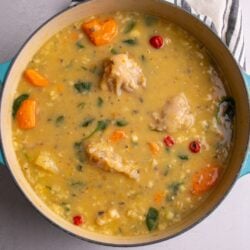 Cow Heel Soup
Cow Heel Soup
Leave a Rating and a Comment